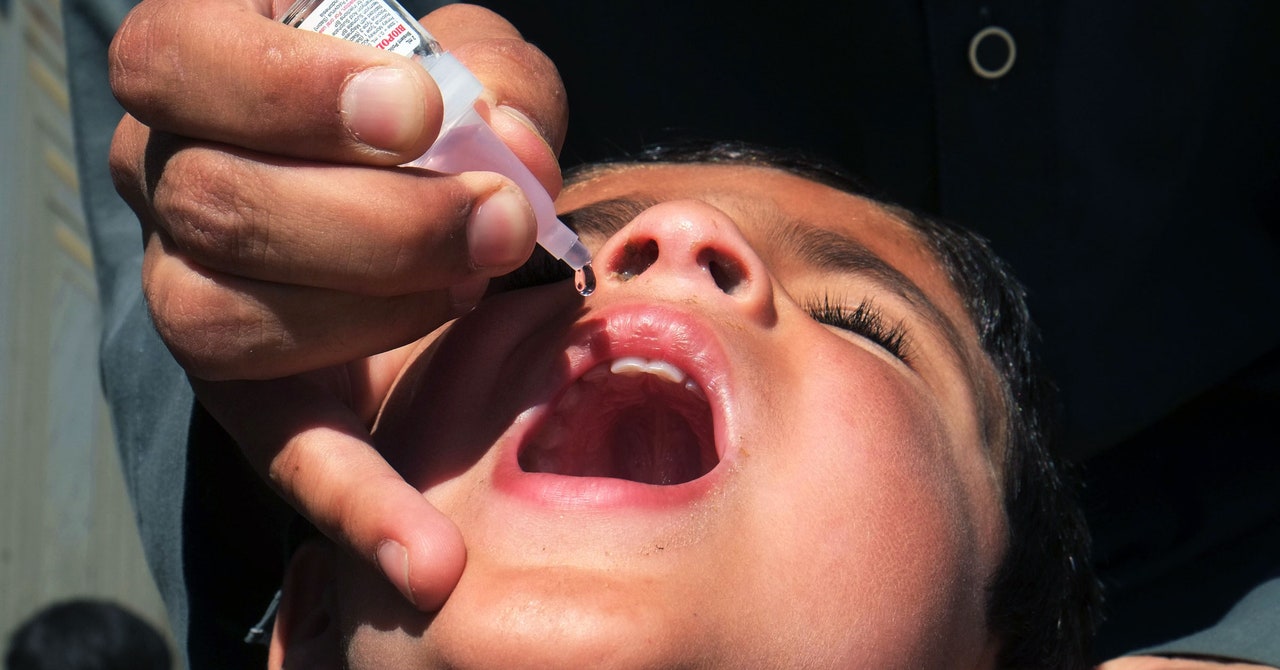Afghanistan Almost Beat Polio. Now the Future Is Uncertain

For more than a week, global attention to Afghanistan has focused on the Taliban’s stunningly swift return to power, and the international airlift that is getting diplomats, Western workers, and refugees out. But a small cohort of disease experts is riveted by the political turnover for another reason: They worry it could undermine the long campaign to eradicate polio, which hinges on that country—and where, after years of disappointments, success now seems close.
Since 1988, a dogged and very expensive international campaign has chased polio from most of the world. Afghanistan is one of only two countries in which the circulation of wild poliovirus has never been interrupted; Pakistan, with which it shares a long border, is the other. Case counts have ebbed and spiked as religious and political factionalism interrupted delivery of vaccines to children, and they surged again last year, to 140 cases in the two countries, after the Covid pandemic forced a three-month halt in the vaccination campaign.
But the numbers right now are impossibly good: There has been just one case of polio in each country this year—both of them in January—and many fewer viruses found in sewage, a key surveillance technique, than in past years. It is a fragile moment in which to face a comprehensive change in government, and the health officials who have brought the campaign this far are collectively holding their breath.
“We are in an incredible epidemiological window right now, in both Afghanistan and Pakistan,” says Hamid Jafari, a physician and director of polio eradication for the World Health Organization’s Eastern Mediterranean Region, which stretches from North Africa through the Middle East to Pakistan. “We are seeing very, very low levels of wild poliovirus transmission in both countries—so low that it is unprecedented. It creates a tremendous opportunity for the program to pounce on this low viral burden and just stop it.”
To be clear, the polio campaign in Afghanistan has not ceased, and there is no indication that the Afghan Taliban leadership will require it to. Last week, the Global Polio Eradication Initiative, the formal name for the campaign, put out a statement that it is “currently assessing immediate disruptions to polio eradication efforts and the delivery of other essential health services, to ensure continuity of surveillance and immunization activities while prioritizing the safety and security of staff and frontline health workers.”
Like case counts, the Afghan Taliban’s attitude toward eradication activities also has ebbed and flowed. In its first turn in power in the 1990s, the Taliban allowed the campaign (a coalition of the WHO, the Centers for Disease Control and Prevention, the Gates Foundation, and Rotary International) to begin to operate in Afghanistan. But in 2018, it forced a pause in areas it controlled, banning teams of vaccinators from going house to house in neighborhoods, and then disallowed mass vaccinations at public buildings such as mosques.
Those bans, along with similar pauses in Pakistan as political parties jockeyed for power, were responsible for spikes in polio case counts: from a total of 33 cases in the two countries in 2018 to 117 in 2019. Interruptions that last a long time can be critical blows, because it takes many rounds of the oral vaccine drops to immunize a child. (Even in the US and western Europe, which use an injectable formula, it takes three rounds to solidify immunity, and a fourth school-age booster to lock it in.)
“We estimate that about 3 million kids really didn’t have access to services between 2018 and 2020,” says John Vertefeuille, an epidemiologist and the CDC’s polio eradication branch chief. That would have left those children—some partly vaccinated and others born after the bans began—vulnerable to the virus and the floppy paralysis it causes, and would have amplified the amount of virus present in the environment as kids became infected and transmitted it to others.
